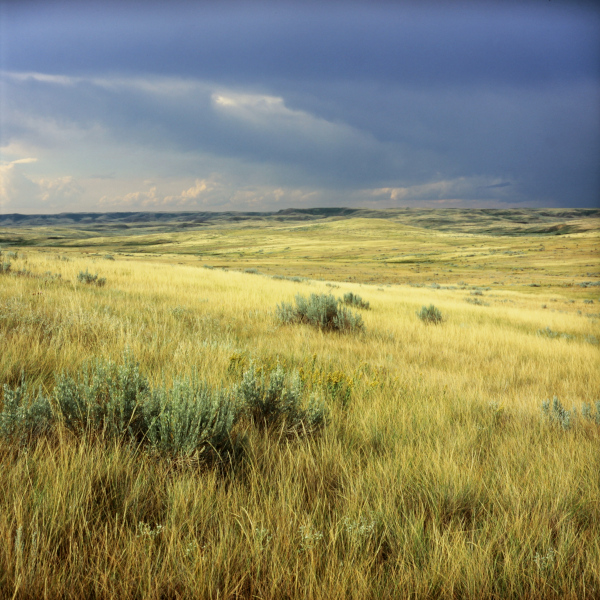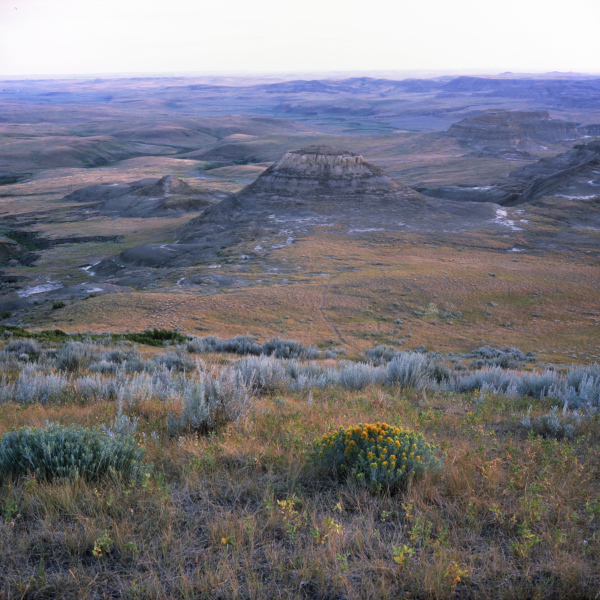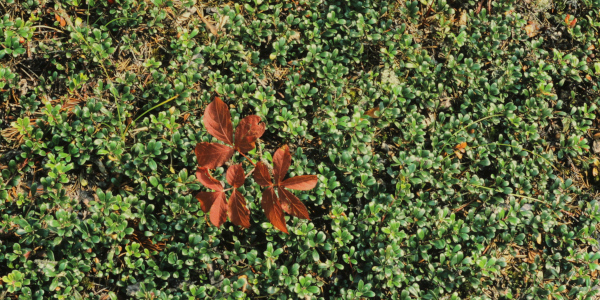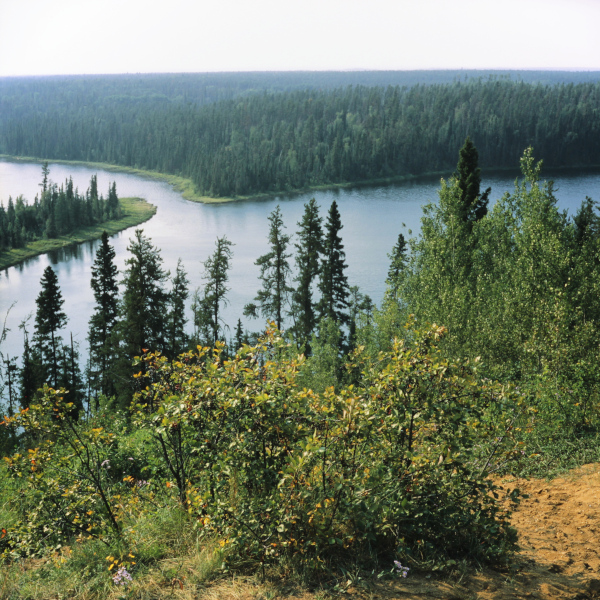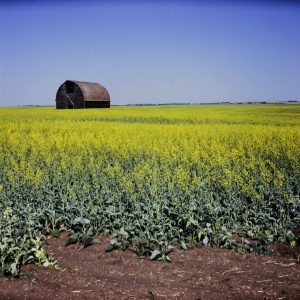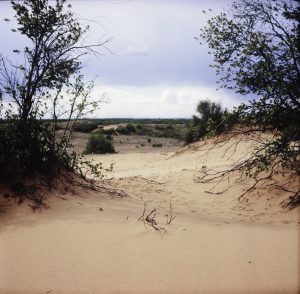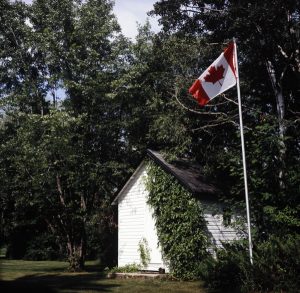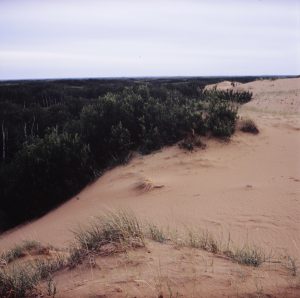My first two images were taken in the East Block of Grasslands National Park in my home province of Saskatchewan, just North of the US border. It’s one of my favourite parks to visit. Since there are almost no trees (just a few cottonwoods down by the river), you can see a really long way. Consequently, you’re likely to see a lot of wildlife if you visit the park: pronghorn antelope, white-tailed deer, prairie dogs, badgers, ferruginous hawks and all manner of songbirds. Perhaps the most interesting is the burrowing owl, which makes its home in abandoned prairie dog tunnels. There’s also a herd of bison that they reintroduced to the park as a range land management strategy: the bison graze heavily on certain species of grasses, helping to keep a well-balanced prairie.
There are no well-defined trails, so you are free to roam around how you like. There are not many visitors to the park, so you can really appreciate the surroundings and get lost in your own thoughts. Even though you can see quite far, there’s little worry about someone walking into the scene you’re photographing. A lot of people, particularly from rural areas of the province find it strange to “go camping in a pasture”, but it’s really a wonderful place to unplug from fast-paced life and just walk around and think about things. The (mostly) native vegetation and abundance of wildlife is also considerably different to a cultivated pasture. It’s hard to imagine that the entire lower half of this province was filled with native grasslands like these, before 90% of it was cultivated.
There was a pretty big storm the one day I went hiking, and as the lightning was getting closer, I realized how little cover there really was around me on the bald prairie. I rushed down to the bottom of a hill and crouched down to make myself small. There were some tremendously loud and bright lightning strikes nearby which were pretty scary. I felt pretty powerless. The Great Plains image was taken about half an hour later, after the storm had started to move on.
For Badland Butte, I wish I would have had a stereo rig that allowed me to increase the stereo base. I tried some cha-chas with the TL-120, but the angle of the shadows actually changed appreciably in between the exposures, leading to some somewhat unpleasant retinal rivalry. I’m fixing up a couple of Agfa Isolettes; hopefully I’ll have them ready to go for this summer. I’d love to hear anybody’s suggestions for a good slide bar. I found out that Jasper Engineering no longer makes their slide bars.
The last two images were taken in Narrow Hills Provincial Park, this time further North, but still in my home province of Saskatchewan. I really liked the subsurface scattering in the red Sarsaparilla leaves, and the background texture of small green Lingonberry leaves made for a nice detail shot. The Chokecherries image is from the top of an esker left when the glacier retreated. A trail runs along the top of the esker which overlooks several small lakes below. The lakes pictured here are called the Grace Lakes. I visited during the end of summer, so it got pretty cool at night.
Hope you enjoy! Thanks for all your submissions, I really had a great time viewing all the wonderful slides this time around!
Ian Andvaag
